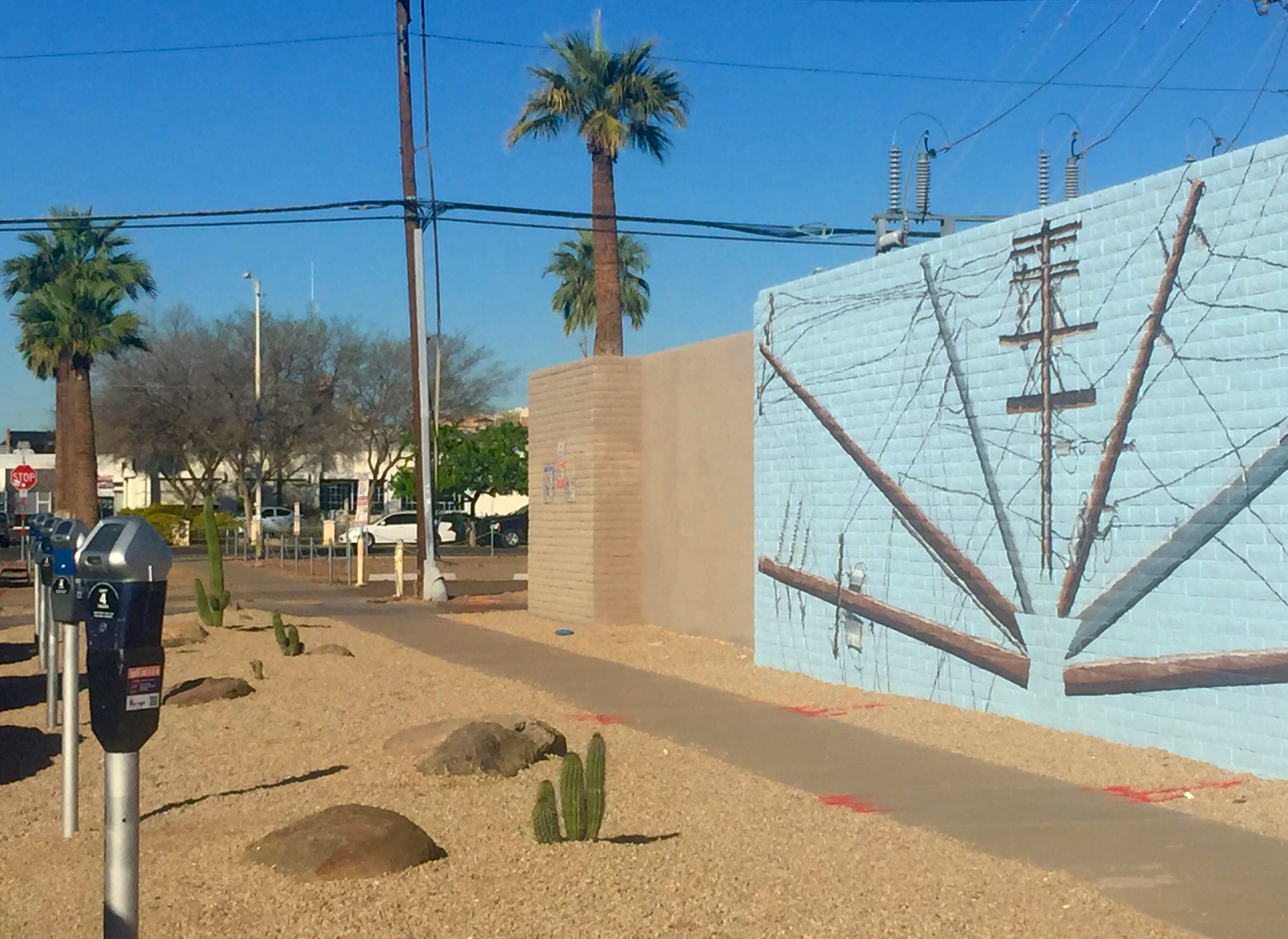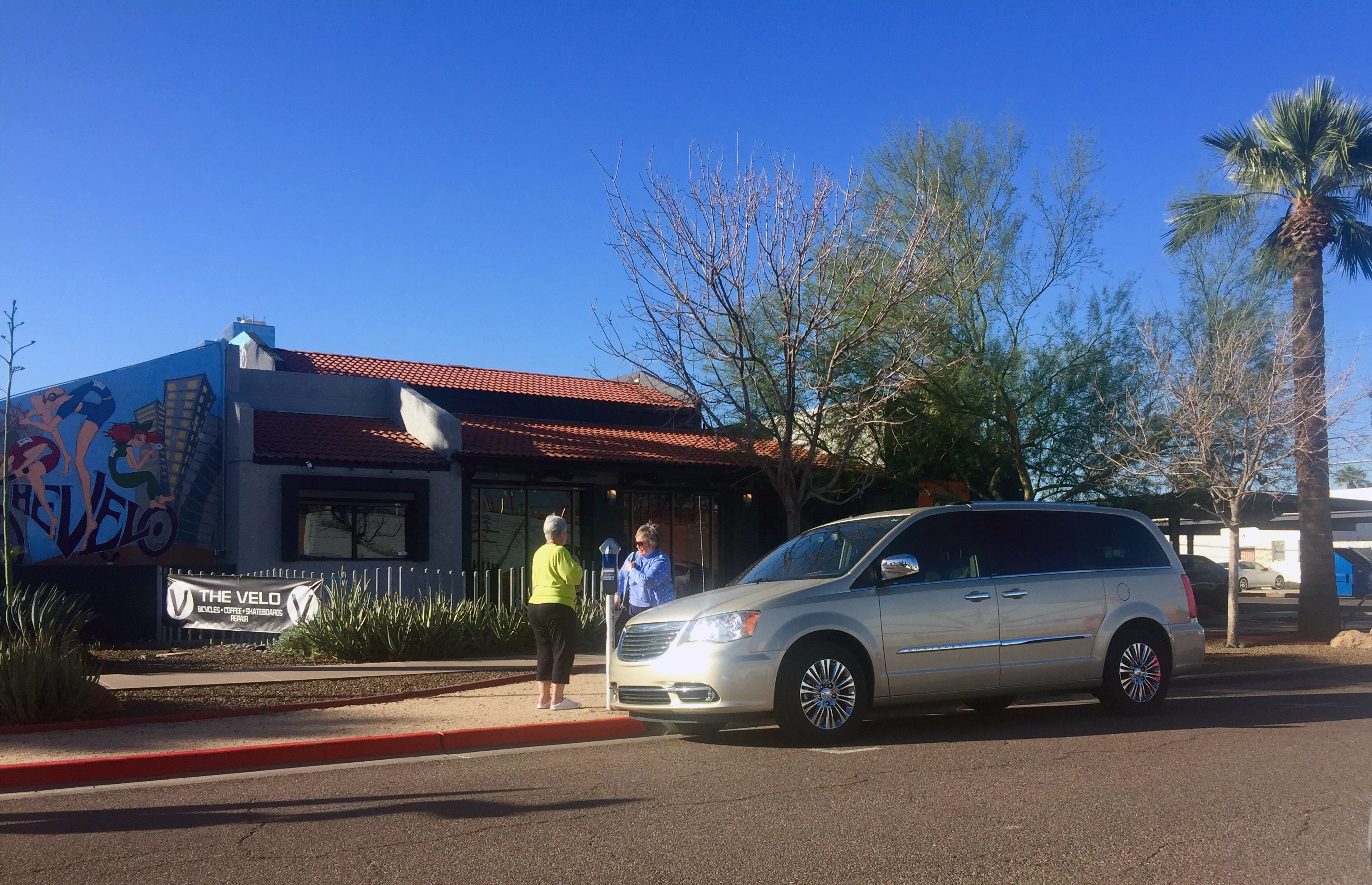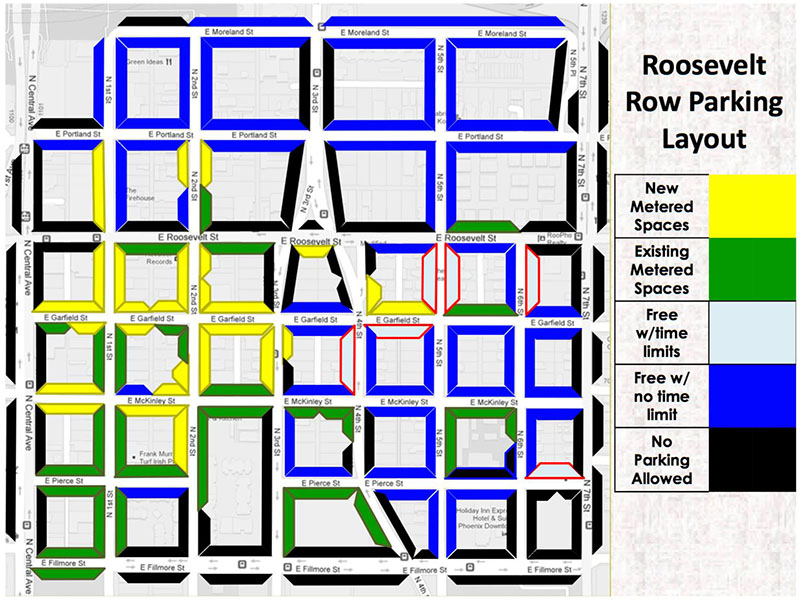
New meters along the north side of Garfield Street, between Second and First streets. (Photo: Fara Illich)
With the recent influx of people wanting to live, work and play in the
Roosevelt Row Arts District, a certain challenge has emerged — parking.
“The area is growing immensely,” said Ben Carpenter, parking manager for the City of Phoenix. “ASU Downtown campus is expanding, more businesses are going in, more residences are going in — so what you have is a situation where if someone finds a free space, they’re going to park there for an entire day, or even a couple days in a row.”
In response to the parking crunch, small business owners and nearby residents formed an adhoc Roosevelt Row parking committee to explore solutions, settling on short-term meters near businesses to increase turnover.
On Feb. 20, the City of Phoenix installed the first of 180 new meters between Fillmore and Moreland streets, Seventh Avenue to Seventh Street. Installation and
Pango programming — a pay-by-phone app — will continue for the next few weeks.
The city worked closely with the parking committee since Aug. 2015 to come up with the plan, with members representing both the
Roosevelt Row Merchant Association and
Evans Churchill Community Association (ECCA). The committee recommmended where the meters should be placed and the time constraints.

Paying for meters via credit card or remotely through the pay-by-phone app Pango can help save time and reduce tickets. (Photo: Fara Illich)
Evans Churchill neighborhood resident and committee member Sean Sweat started collecting parking inventory and mapping the area back in 2012 when the group intitially formed. In addition to removing meters from underutilized spaces, the goal was to create the right balance for high-traffic areas.
“In learning about how all the modes of transportation interact, parking is something that is fundamental,” he said. “It doesn’t just affect driving, it can actually promote and discourage how people use other modes.”
He stresses the difference between managing on-street parking, which is what the Roosevelt Row parking group is currently trying to do, and creating more surface lots, which equates to less vibrant, urban areas for people to live, work and play.
“Parking creates driving so we need to be really cognizant of that,” he said. “If people are coming here for a long period of time, we want to incentivize those people to light rail or bike.”
For those uniterested in alternative transportation, and wanting to hang out longer than a couple of hours, more than 500 free on-street parking spaces still remain, according to Carpenter. The new meters only make up about 10-15 percent of the overall supply.
“There was sort of this expectation for many years that there’s plenty of free parking downtown and as the economy has picked up and business is booming, that’s kind of gone away,” Carpenter said. “It’s just kind of a cultural and economic shift.”
While more people will have to pay for on-street parking near the commerce center of Roosevelt Row, the pricing is on the low to average end compared with cities of similar size.
According to
a national parking study established by the San Francisco Municipal Transportation Agency, the average cost for on-street parking in Phoenix is $1.50 per hour. Philadelphia is twice as much at $3 per hour, San Diego is $1.25 per hour and Dallas is the same as Phoenix.
The new meters provide two-hour parking between 8 a.m. and 5 p.m. and four-hour parking from 5-10 p.m. On weekends, the meters extend to four hours between 8 a.m. and 10 p.m.

Click to enlarge. (Map: City of Phoenix)




